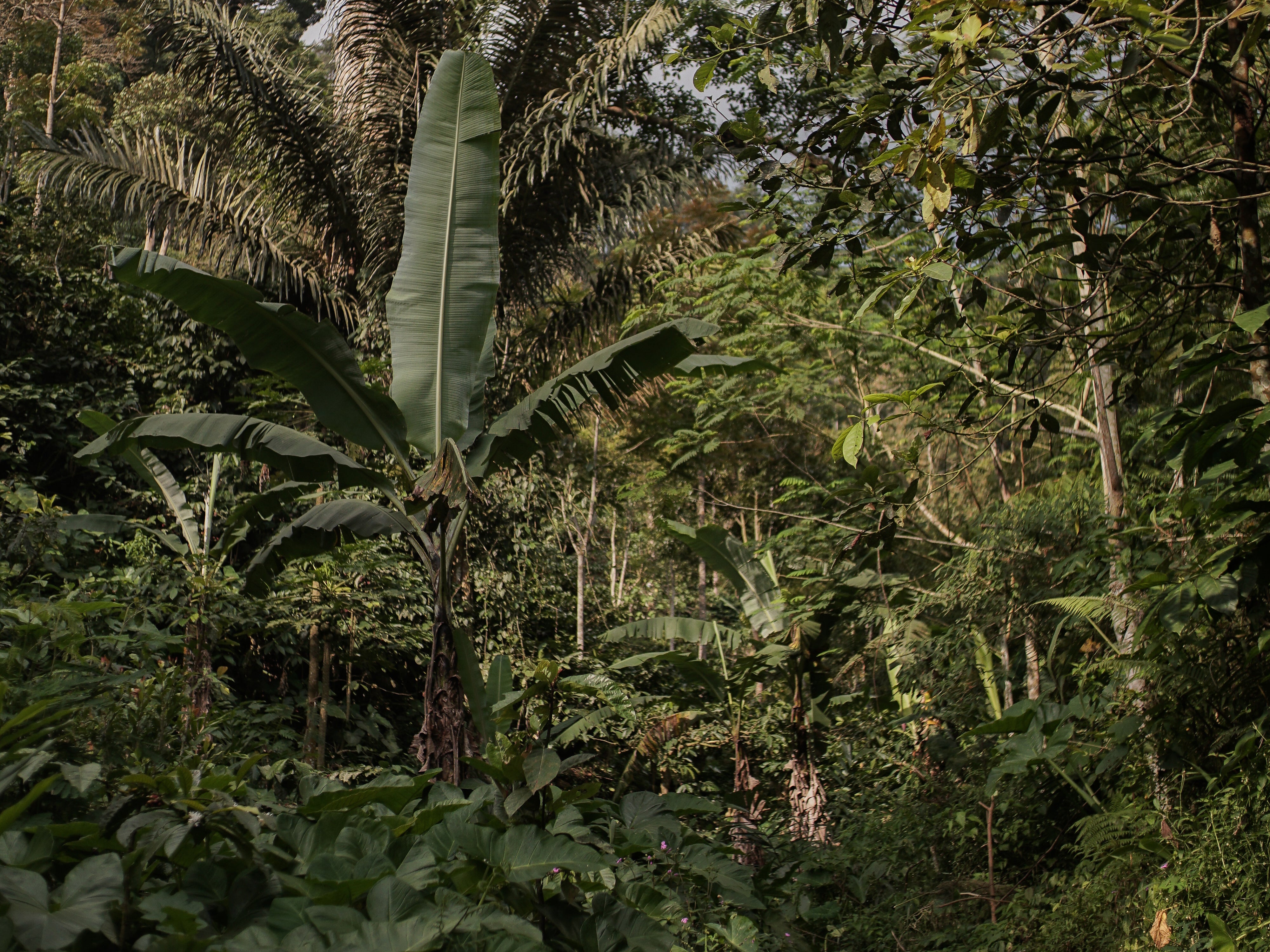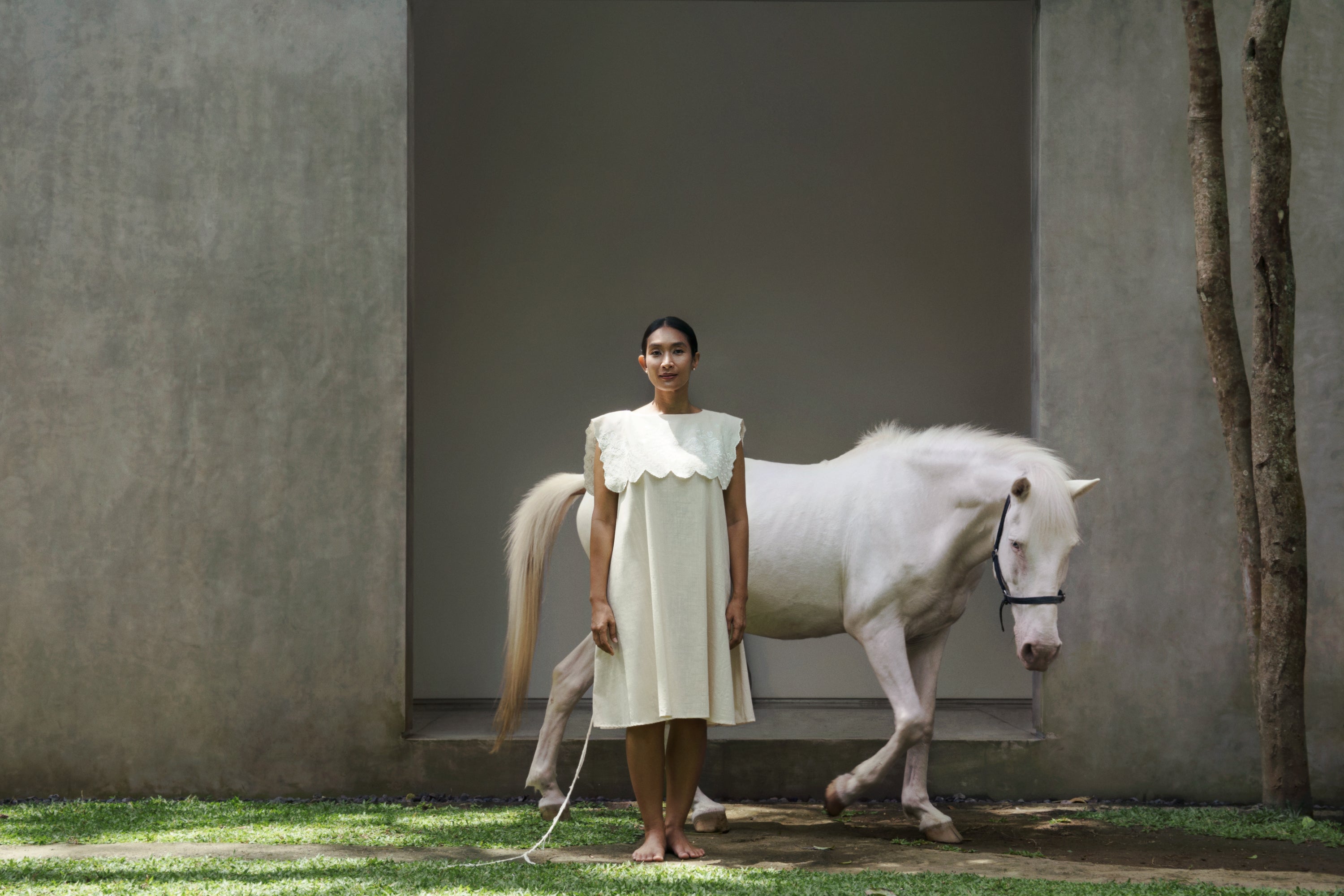
It seems like everyday, everything we buy is being marketed as sustainable. But who really walks the talk?
Consider this.
Company A: is a small brand that uses all natural fibres and makes a small batch of products. Is it a sustainable company?
Company B: is a large brand producing thousands of products, but owns its own factories and guarantees workers at least earn a minimum wage. Is it a sustainable company?
Company C: is a brand working with deadstock or upcycled fabrics without knowing where or how those fabrics were made. Is it a sustainable company?
I hope this simple exercise makes you realize just how complex and layered the issues are.
We currently don't have a standardized definition of what sustainable is. Without it, what does 'sustainable fashion' actually mean?
That's what makes the issue highly subjective - and prone to greenwashing (making claims that make products seem more 'green' than it actually is. So oftentime, I find the use of the term sustainable fashion to be very misleading as there are so many components of that. From the chemicals to the fossil fuels used from manufacturing, but also distribution and end of life.
But the truth is, we cannot buy our way into sustainability. So I think we need to be more responsible as businesses. Acknowledge that every product we make has an impact. And instead of labeling it as sustainable, we can drive more change by simply stating where we are and working continuously to lessen the negative impact.
Our vision is actually a world where people have far less clothes, but more meaning. Buying less, but well, and caring for it more. Only when we change our relationship with fashion can we have a chance in a truly circular economy.
What is dangerous, however, is using 'sustainability' lightly in marketing campaigns.
Often these campaigns are distracting you from the main issue: the lack of traceability and accountability behind how something is made. The toxic chemicals being used everyday to the exploitative practices that keep women invisible and in poverty. Business as usual, covered by feel-good smoke and screen.

The reality of Batik synthetic dyeing in Indonesia, image from The Jakarta Post.
The good news: There’s a lot you can do to be a part of the solution! That’s why I’ve put together a quick guide about the issues that led to the creation of our #MadeRight standard. You can use it to differentiate between brands that create real change and the growing number of those whose ethical and sustainable claims are – sorry to be so blunt - nothing but empty marketing gimmicks.
Let’s dive right in!
#MadeRight is a promise that your clothes provided a living wage, is kind to the Planet, and sustains heritage craftsmanship.
ISSUE 1: WHO MADE IT?
Industry Practice
Most brands outsource their production to workshops. From you to the women who make your clothes, exist up to 8 layers of middlemen.
<60% of handcrafted clothes are made this way – by women who are invisible, toiling away at home, earning a poverty wage.
#MadeRight
We work directly with women working from home, in villages not factories. That means, you know exactly the very Ibu who made it, dyed it, stitched it.
Because only this way we can make sure that your clothes are #MadeRight.
And the profits: 100% are reinvested back into our villages. Funding our craft schools so more women can lift herself from poverty.
Full circle.

ISSUE 2: UNDER WHAT CONDITIONS?

Industry Practice
This was a reality I learnt the hard way when I was doing my research: ‘Handmade’ does not equal fairly paid.
When brands outsource production, they lose control over how their products are made.
This leads to low wages, intimidation and women being forced to handle dangerous chemicals in their homes.
Worst is the hidden child labor practiced in the industry.
#MadeRight
In our schools, our Ibus learn to calculate how to price her piece through Time Motion Studies. This targets the leading source of exploitation: lack of awareness of her rights and knowing how much she’s worth.
On average, our Ibus’ incomes have increased by 60%. What this leads to is a sense of pride. She is changing her own life.
That is true empowerment.
ISSUE 3: HOW WAS IT DYED?
Industry Practice
Because they’re faster and (much) cheaper, most brands use synthetic dyes, made of petrol-based chemicals.
Every day, tons of these toxic and even carcinogenic waste water are dumped into our rivers, unfiltered.
Women working from home often have to use them too – without safety equipment and without any filtration technology to keep their environment safe.
#MadeRight
All our clothes are naturally dyed with plants that are grown by our own farmer cooperatives.
This is not only safer for our artisans and their families. It’s a lot better for their environment, the climate, and for you, too!
From palm sugar to banana stems, we keep researching to create more natural colors for your most meaningful clothes :)

ISSUE 4: WASTE & PLASTICS

Industry Practice
Fashion has a huge plastic problem.
From microplastics in polyester clothes that get released into the Ocean with every wash - to single use polybags that get thrown out as soon as you receive our clothes.
But not only that. The waste is overwhelming.
<30% of fabrics get thrown out during production as offcuts. Fueled by trends, 1 in 3 Indonesians throw out clothes after wearing it once. Piling in landfills, Polyester clothes never degrade.
#MadeRight
Our packaging is 100% plastic free and made by our Ibus using upcycled threads.
All our fabrics uses bio-degradable natural fibres.
And our offcuts? We turn them into the cutest #ReMadeRight pieces. The smallest ones are turned into our own tag.
Progress to us is measured in a smaller, more meaningful wardrobe. That’s why we offer a free repair and redye services to give them a new life!
ISSUE 5: FAKING IT
Industry Practice
“Handmade” doesn’t automatically mean “ethical”. And using traditional motifs does not mean you’re supporting local artisans. Especially when those motifs are screen- or digitally printed.
Yet many brands still post picture of their synthetic printed collections along with pictures of happy craftswomen.
Real number of artisans impacted? 0.
#MadeRight
All our clothes are crafted by hand – using traditional techniques from Indonesia’s heritage.
For us it’s not about efficiency or minimizing costs. We want to empower as many women as possible to continue their craft and earn a living wage.
It’s harder, takes more time and costs a lot more. But for us, it’s the only way. Because the last thing the world needs is another brand.

Traceability: The Thread that ties it all together
Traceability means knowing exactly who made it, how, and most importantly, under what conditions.
As you can see from the above, a better fashion world comes down to traceability: Knowing how, where and under what conditions your clothes where made. Most brands can’t tell you where any of their materials came from, let alone who grew the fibers or how much he or she was paid. Fashion’s sprawling global supply chain has made traceability difficult.
So what can you do?
Today, almost everything we buy suddenly says “Ethically Sourced”, “Sustainably Made” etc. Here are a couple of questions you can ask your favorite brands to hold them accountable - and maybe even get them to slowly change their practices. (If they don't have a ready answer, well, yeah that's probably not a good sign):
- Who made it? How was it made? And under what conditions?
Remember, ‘handmade’ does not equal fairly paid. If they use vague claims like ‘Ethically sourced’, ask: How do you make sure the workers receive a living wage? - Did someone from your brand ever visit the workshop to see conditions on the ground?
- How do you deal with waste from production and synthetic dyeing? Is there any filtration system in place?
- If they use natural dyes: How do you make sure you source the dyes sustainably (aka no deforestation). And were any chemicals used in the process (yes, a lot of natural dye brands actually use chemicals as you can see here).
- Is this really batik/ikat or is this just printed? How many % of your collections are handmade vs screen/digitally printed?
And whenever you have doubts – don’t buy it. Buy less, but demand more.
It’s time to make sure our choices no longer hurt others.
Sustainability is a journey - a difficult one. There always seems to be more we can do, more that needs to be done. But all change starts with small acts - like asking questions and being more critical with the brands you encounter. Together, we can transform the way our clothes are made to a cleaner, more inclusive industry.
Clever marketing won't solve the problem. Only changing how your clothes are made will. And you have that power.
The truth is, every choice you make has an impact on someone else. From the way fibres are grown in the field, to how the fabric was made, to who stitched it. Where issues are buried under a complex system of outsourcing.
As always, I wanna invite you to keep raising your voice. Ask: "Who made my clothes, how was it made, and under what conditions?"
It matters. Especially for those who don't have a voice.
Your nerd who cares,
D
_
P.S. If you find this guide useful, please share it! Amplify the knowledge. It means all the world to the women who make your clothes.




